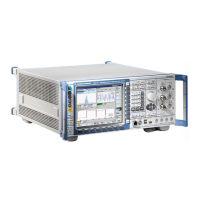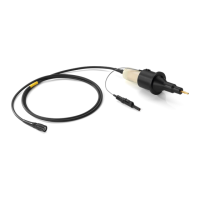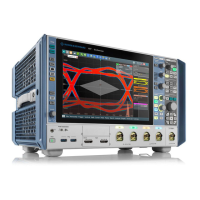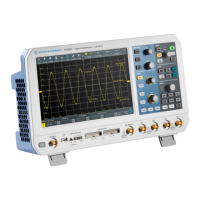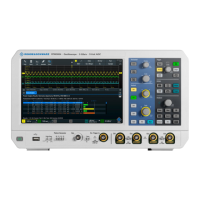R&S CMU-B17 Technical Specification
1100.4903.12 TI.7 E-3
R&S CMU in combination with fading simulator R&S ABFS or R&S
SMIQ/SMIQB14 (R&S CMU provides the faded RF signal)
R&S CMU200 setting: Fading Path
The R&S CMU200 incl. option R&S CMU-B17 in combination with IQ fading simulator R&S ABFS or
R&S SMIQ/SMIQB14 can be used for receiver tests under fading conditions. In this case the signal is
forwarded to the device under test (DUT) via CMU RF interface.
Additional information for GSM:
To avoid influences on the fading profile it is highly recommended:
• To set all timeslots to the same level.
• To use for the TX signal of the R&S CMU the same RF frequencies and RF levels for both TCH and
BCCH.
• To switch hopping off.
Based on external PC it is possible to perform an automated signal path calibration procedure. Both
instruments will be controlled via IEEE interface. An application note incl. software is available on R&S
WWW.
R&S CMU200 as IQ generator / RF analyzer
Another important application is the generation of IQ signals meeting the relevant standards. The user
can generate complex signals that may even originate from a real signalling sequence. Most mobile
radio chipsets comprise a RF chip and a baseband chip that communicate with each other via an analog
IQ interface. The R&S CMU-B17 IQ-interface can be used to access the two chips. In mobile radio
development, different teams are often required for this purpose. The IQ interface allows development
work to be divided in space and time.
R&S CMU200 setting: Bypass w. I/Q IF OUT
CMU200
Signal-
generation
CMU-B17
RF configuration
incl.
level setting
RF
DUT
IQ In
IQ Out
Fading Simulator
ABFS or
SMIQ/SMIQB14
RF IN
CMU200
IQ Out
Signal-
generatio
CMU-
B17
RF OUT
IQ IN
DUT
(Transmitter)
Signal-
analysis
Receiver
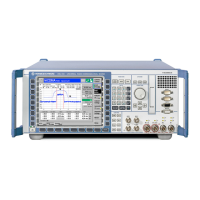
